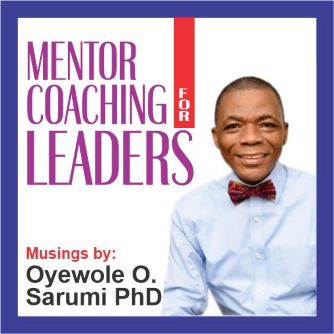1.2K
Oyewole O. Sarumi PhD
Introduction
Formal education lays the groundwork for knowledge and critical thinking skills. However, self-directed learning is essential for continuous professional growth in today’s dynamic world. This analysis explores the potential of self-directed learning alongside traditional schooling, examining their strengths, their limitations, and how they can work together for optimal professional development.
The Learning Landscape: A Spectrum, Not a Dichotomy
Formal education and self-directed learning exist on a spectrum, not as opposing forces.
Formal Education: Provides structure, standardized assessments, and credentials. It establishes a foundation in core subjects and critical thinking.
Self-Directed Learning: Offers customization and personalization. Learners can pursue specific interests, develop targeted expertise, and stay abreast of industry trends.
The Efficacy of Self-Directed Learning
While a strong foundation from formal education can benefit self-directed learning, research demonstrates its effectiveness in professional development:
A 2021 study by LinkedIn Learning found that 76% of learning and development professionals believe self-directed learning is critical for employee skill development.
A 2019 study by Udemy showed that 80% of learners reported career advancement after engaging in self-directed learning initiatives.
Benefits
Tailored Learning: Individuals can focus on specific goals and learning styles, leading to deeper engagement and knowledge retention.
Skill Development: Self-directed learning fosters valuable skills such as time management, self-discipline, and critical thinking for evaluating resources.
Staying Current: This approach allows professionals to adapt to rapidly evolving industries and acquire in-demand skills.
Limitations
Self-Discipline: Self-directed learning requires strong motivation, time management, and discipline to curate reliable content and assess learning progress.
Information Overload: The abundance of online resources can be overwhelming. Evaluating source credibility and avoiding confirmation bias are crucial.
The Role of Content Selection: Complementary Resources
Both formal education and self-directed learning offer valuable content:
Formal Curriculum: Provides a foundation in core subjects like math, science, and writing, building transferable skills applicable across diverse fields.
Self-Directed Learning Resources: Offer in-depth exploration of specific topics, industry trends, and cutting-edge information. This could include:
* **Academic journals:** Peer-reviewed research for evidence-based learning.
* **Industry publications:** Insights into current practices and trends.
* **Online courses:** Structured learning opportunities from reputable institutions.
* **Self-help books:** Expertise and guidance from industry leaders.
**Effective Self-Education: A Strategic Approach**
Self-directed learning requires a strategic framework:
1. **Identifying Learning Goals:** What specific skills or knowledge do you want to gain to advance your career?
2. **Selecting High-Quality Resources:** Evaluate sources critically. Explore academic journals, industry publications, and online courses alongside well-respected self-help books.
3. **Active Learning:** Don’t just read passively. Take notes, apply the knowledge to real-world situations, and engage in discussions with colleagues.
4. **Critical Evaluation:** Regularly assess your learning progress and adapt your approach if necessary.
Beyond Personal Experiences: A Broader Perspective
Anecdotal evidence is valuable, but a more analytical approach involves:
Quantitative Data: Research demonstrates that individuals who combine formal education with self-directed learning achieve the most professional growth.
Identifying Biases: Confirmation bias can lead individuals to focus on experiences confirming their beliefs. Be open to diverse viewpoints and contrasting experiences.
Conclusion
Self-directed learning is a powerful tool for professional development. However, it’s a complement, not a replacement, for formal education. By critically evaluating both learning avenues and curating high-quality resources, individuals can continuously expand their knowledge base, develop in-demand skills, and reach their full professional potential.
Blessings 



TCN@LIFE-LEADERS COACH


